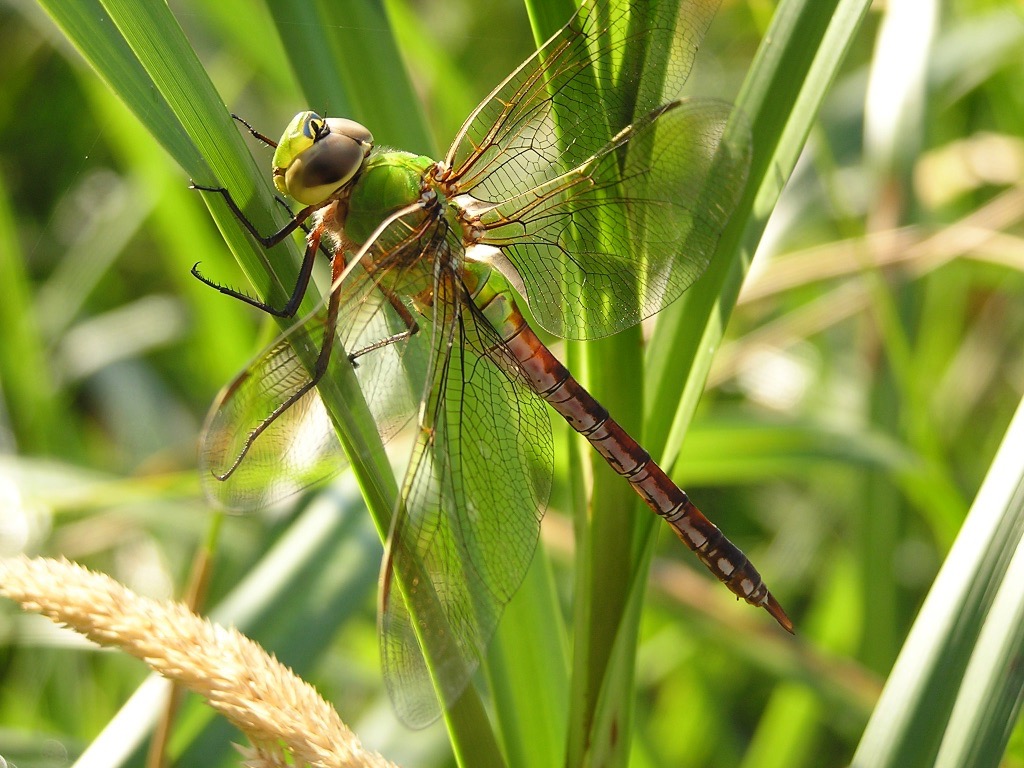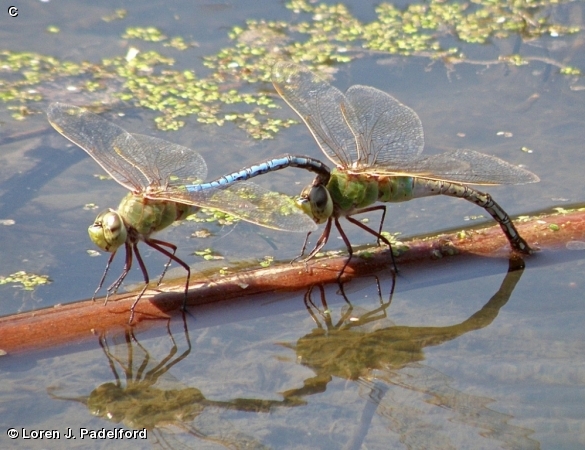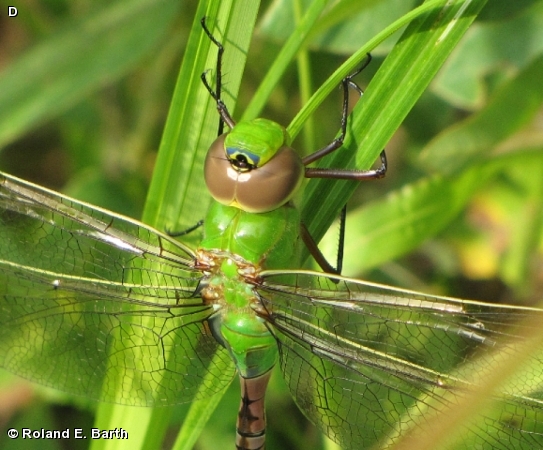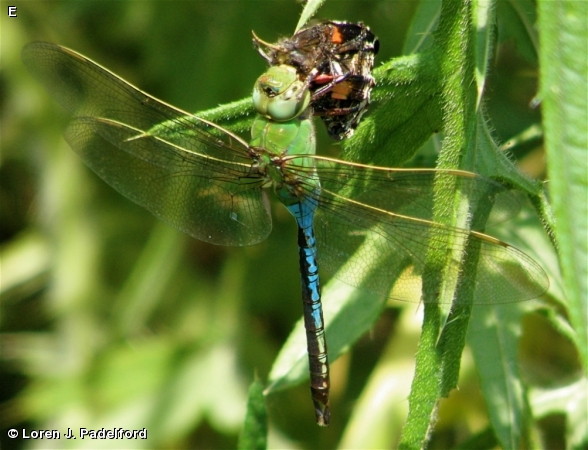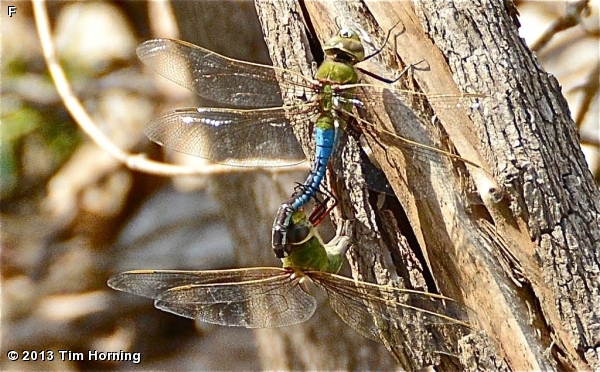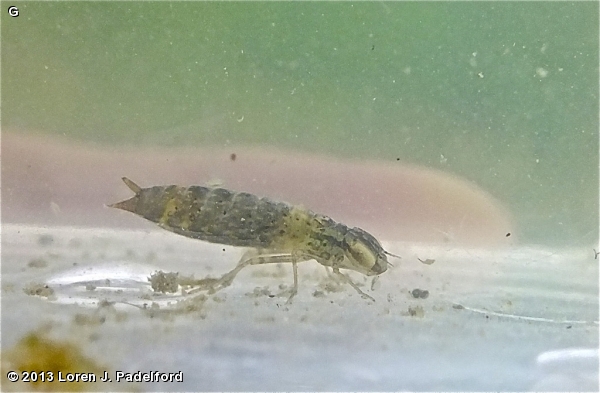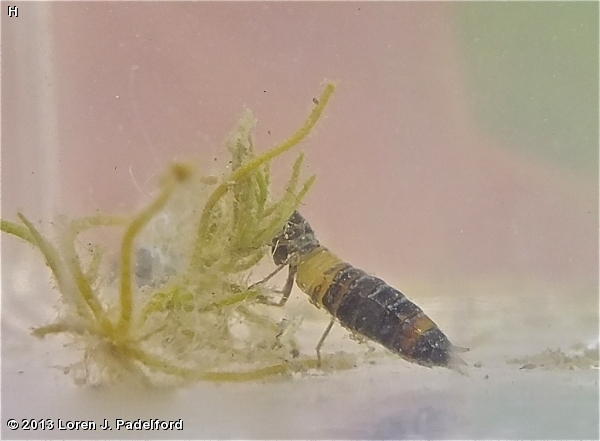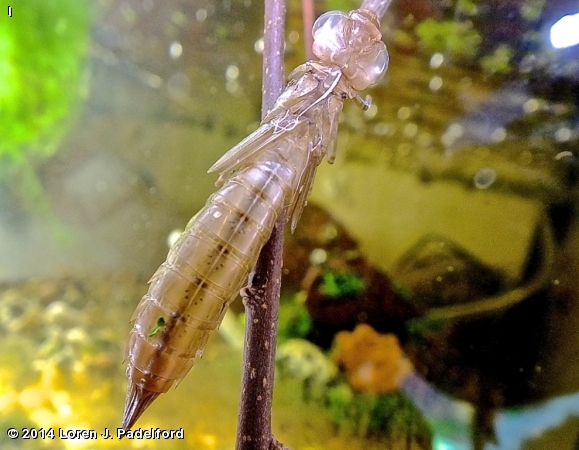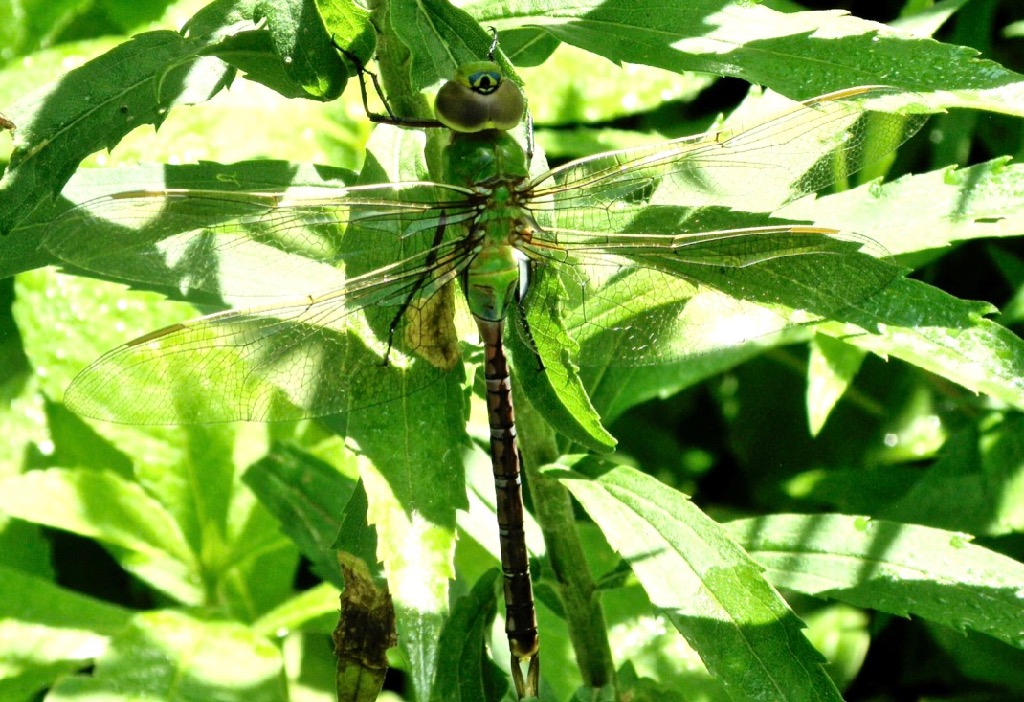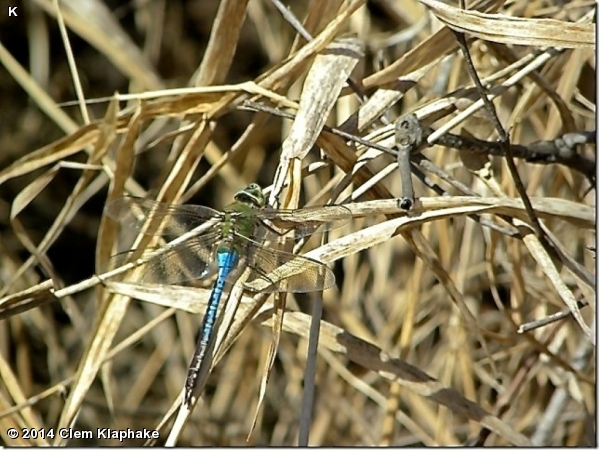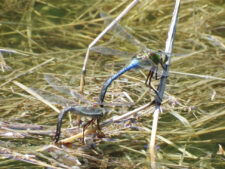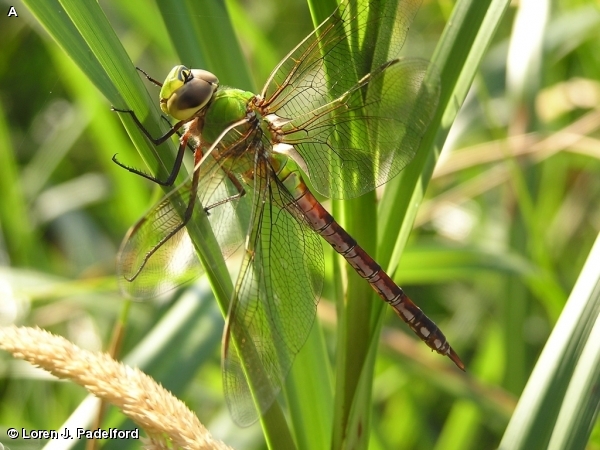
This large darner is about 3 inches or 75 mm in length. Males have an all green unmarked thorax and blue abdomen with black markings on the sides. Females are clear green on the face, thorax and top of the abdomen. The remainder of the abdomen is gray-green. Juveniles have coloration similar to adult females but the abdomen is usually reddish brown to violet. The eyes of this species are large and meet on the top of the head. The larvae are large, about 1 3/4 inches in the last instar and are active predators of mosquito and mayfly larvae, small fish and tadpoles. The larva shown here is an early instar and about .75 inch long.
The most common and widespread Darner in the U.S., it is the first dragonfly to appear in spring as emigrants arrive from farther south. These darners can be seen flying along the stream and the Great Marsh in Fontenelle Forest as early as mid-April. Fall migrants appear in September and October. At that time it is possible to see large feeding swarms of darners as they make their way south.
Photo 8 shows the exuvia of a female Green Darner that eclosed on 3/1/14 at Fontenelle Forest. The larva was in pond water taken from the wetlands teaching pond in late August 2013 and kept in an aquarium in the nature center. Females deposit their eggs in plant tissue immersed in water. To prevent others from mating with her, the male Green Darner flies in tandem with the female while she lays eggs. The Green Darner is a strong migrant, as large numbers have been seen flying over the Gulf of Mexico and along the Atlantic and Pacific coasts in fall.
Disclaimer: The content of NatureSearch is provided by dedicated volunteer Naturalists of Fontenelle Forest who strive to provide the most accurate information available. Contributors of the images retain their copyrights. The point of contact for this page is: Babs Padelford.

